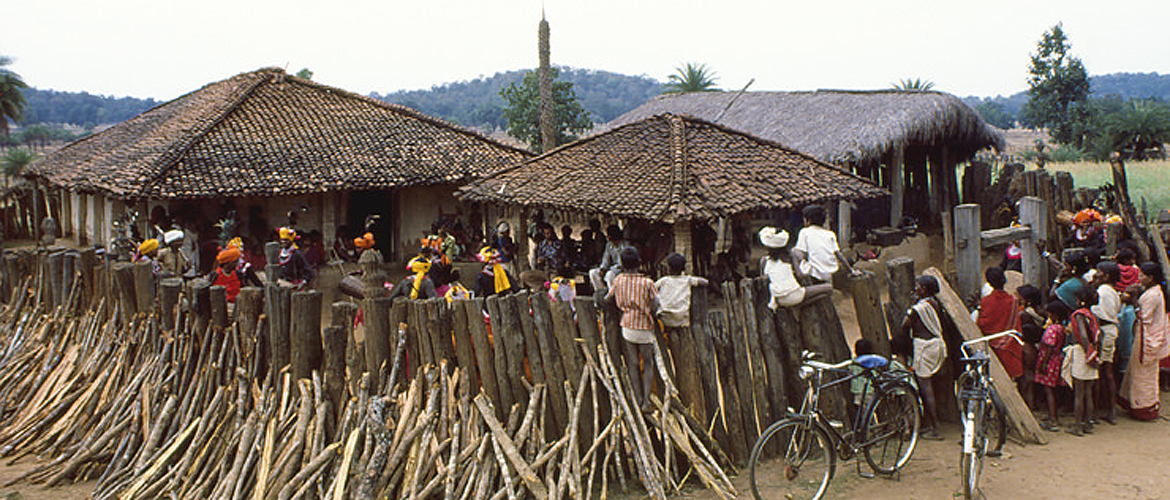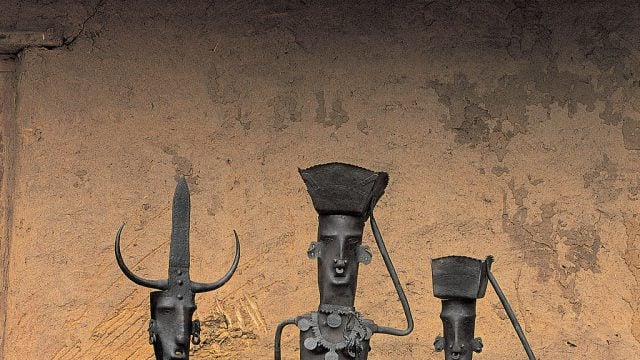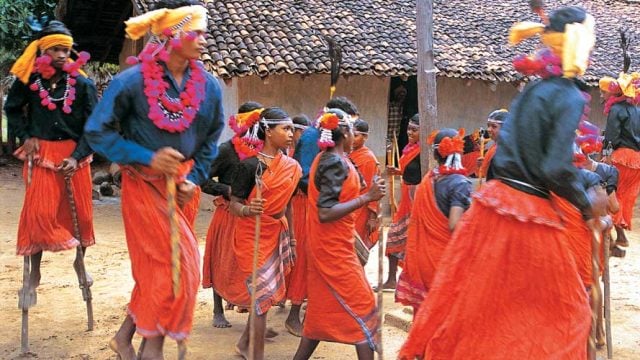The ghotul is a social institution in Bastar, its forms and extent varying from community to community.
The origin of the institution can be traced back to Lingo Pen, the heroic ancestor of the Gonds. According to celebrated Gond researcher Verrier Elwin, a missionary who chose to marry a local girl rather than convert others, the first ghotul was “as beautiful as the horns of a bison, beautiful as a horse’s throat… The lord of the house (Lingo) wore a turban like a white gourd-flower, his dhoti was of coloured silk, his shirt shone in the sun, his clogs were made of sandalwood…”
A ghotul of the Murias is a rectangular-shaped house with bamboo walls plastered with mud, a thatched roof and a big courtyard and bamboo fencing. The cheliks (unmarried boys) and motiaris (unmarried girls) begin to gather here by nightfall, to sing, dance or just laze around. Boys and girls choose partners conforming to the clan rules of exogamy. Some ghotuls encourage permanent partnerships while others prohibit associations of more than three nights.
According to Elwin, the ghotul was not just a club, but a place where freedom and happiness were treasured. Sympathy, friendliness, unity and hospitality were of primary importance. Love was beautiful, clean and precious and sex was a part of life. Today, ghotuls are fast disappearing.
blog
Chhattisgarh
culture





